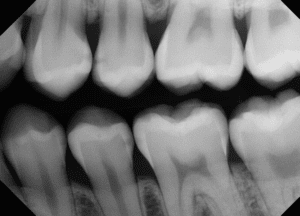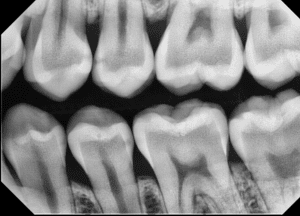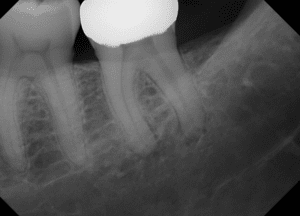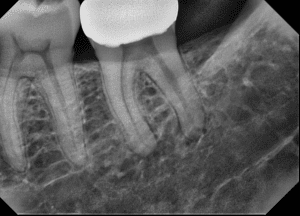Objective
Film naturally has its greatest contrast in the hard tissue regions of the radiograph. With the advent of digital imaging, this effect is lost due to the linear response of solid state digital sensors. This is partially compensated for with the application of gamma to the image data. But even this may not be enough for subtle hard tissue lesions. The Caries/Endo filter increases hard tissue contrast even further while still maintaining visualization of the soft tissue regions as well.
Design
Gross adjustment of gamma alone (or any other brightness mapping function) is not able to sufficiently boost hard tissue contrast without sacrificing visualization of other regions. Using proprietary adaptive dynamic range compression methods similar to those in XDR’s Perio filter, XDR designed the Caries/Endo filter. This filter extends hard tissue contrast by adaptively adjusting contrast to the local regions within the radiograph. This maintains sufficient detail in all regions while locally boosting contrast to the signal-to-noise limit for that region.
Results
Figures 1a and 1b show how the Caries/Endo filter helps reveal Class II lesions. Figures 2a and 2b show how the Caries/Endo filter accentuates the extent of periapical lesions.
|
|
|
|
|
|
Conclusion
Although all final diagnoses should be performed with un-filtered images, tools such as the Caries/Endo filter help the diagnostician see radiographic features they might otherwise miss. The Caries/Endo filter locally boosts contrast up to the noise limit, ensuring the clinician sees all the contrast detail in the image, from which they can draw a more complete conclusion.



